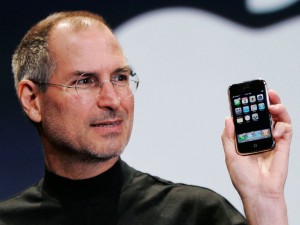
You may not know, but the late Steve Jobs who helped create the iPhone was also renowned as an inspiring public speaker.
He possessed that most special ingredient – charisma, the ability to get people to follow him. Charisma may seem like a mystical quality but psychologists have actually broken it down into forces such as confidence, optimism, an interest in others, a passion for your subject and an ability to express it.
These forces in fact result from being;
(1) relaxed and happy, (2) loving your subject, and (3) wanting to connect with others.
Connecting with others is the key.
A female journalist once interviewed two wealthy and eligible men in England for a magazine story. After the interviews she was asked which of the men she liked better. Both were successful and attractive. But only one had real charisma.
“Well she said, the first gentleman made me feel like I was with the most important person in the world. But the second gentleman made me feel like I was the most important person in the world.”
Good presentations gain their charisma from making your audience feel like they are the most important people in the world.
So what can we learn from the presentations of Steve Jobs?
In her book ‘The Presentation Secrets of Steve Jobs’, Carmine Gallo outlines some key techniques. Let’s take a look in this blog at just a few of the key features:
1. The Power of 3
Analysis of his presentations suggest that Steve Jobs never tries to make more than 3 key main points. Why is 3 magic right number? It’s memorable for the human mind. It was never Goldilocks and the seven bears was it, or the four stooges?
2. The villain and the conquering hero
Great presentations are ultimately built on sharing stories. The best stories involve the conflict between good and evil, or a hero and a villain – the more treacherous the villain the better.
Steve Jobs would often begin with introducing the villain – for example, access to the internet never being truly mobile – and then he would reveal the hero, or the solution that would make your life easier and more enjoyable – the iPhone.
3. The care factor and the build-up
In the early part of his presentations Jobs seemed to focus on the key question, why should you care? Once he got the response, “yes, I care,” he’d then develop it to work towards a “wow, that’s amazing!” moment.
In the award-winning online Master Communicator TV course, by SpeechSchool.TV an entire lesson is devoted to more fully exploring the techniques as used by Steve Jobs. Get more information about this English Public Speaking course.

